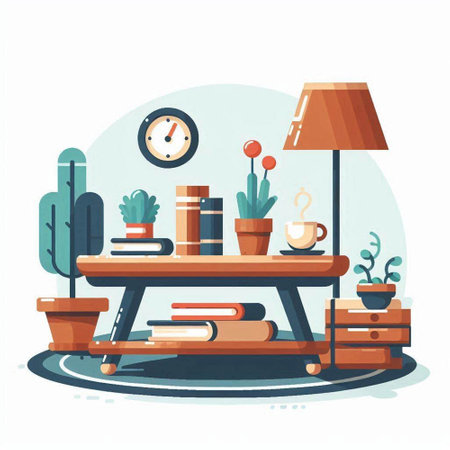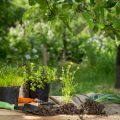Embrace Native Plants for Sustainable Beauty
When it comes to creating a beautiful landscape that won’t drain your wallet or your free time, native plants are the real MVPs. Choosing flora that naturally thrive in your local environment means less watering, fewer fertilizers, and minimal fuss—perfect for busy homeowners or anyone on a budget. Native species are already adapted to the climate and soil in your area, so they can handle whatever Mother Nature throws their way with little intervention. Not only do these hardy plants save you money on maintenance and resources, but they also attract pollinators like bees and butterflies, helping to support your local ecosystem. Plus, a well-designed yard full of native blooms and grasses doesn’t just look inviting—it instantly boosts your home’s curb appeal. By filling your garden beds with regional favorites, you’ll enjoy a vibrant outdoor space that grows more stunning each year without breaking the bank or eating up your weekends.
Simple Lawn Alternatives
If you’re looking to keep your yard beautiful while cutting down on both maintenance and costs, considering alternatives to the traditional grass lawn is a game changer. Grass requires frequent mowing, watering, fertilizing, and pest management. Instead, you can opt for budget-friendly options that thrive with less attention—saving you money on water bills and giving you back your weekends.
Clover Lawns
Clover is gaining popularity as a practical alternative to standard turfgrass. It stays green through drought, rarely needs mowing, and naturally enriches the soil by fixing nitrogen. Plus, it’s soft underfoot and safe for pets and kids.
Groundcovers
For shady or hard-to-mow areas, groundcovers like creeping thyme, ajuga, or sedum can fill in beautifully. They create a lush carpet of greenery (sometimes with flowers) and crowd out weeds, all while needing far less maintenance than grass.
Popular Groundcover Options
| Plant Type | Best For | Maintenance Level |
|---|---|---|
| Creeping Thyme | Sunny spots | Low |
| Ajuga (Bugleweed) | Partial shade | Low |
| Sedum (Stonecrop) | Poor soils & full sun | Very Low |
| Moss | Shady, damp areas | Very Low |
Mulch Beds
If you want the ultimate set-it-and-forget-it solution, mulch beds are perfect. Use wood chips, shredded bark, or even gravel to cover bare soil. Mulch suppresses weeds, conserves moisture (so less watering), and gives your landscape a tidy look. You can easily add low-water native plants or perennials for seasonal color without much extra work.
The Bottom Line: Lawn-Free Savings & Simplicity
By swapping out traditional grass for clover, groundcovers, or mulch beds, you’ll enjoy a more sustainable yard that’s easier on your wallet and your time. These smart choices are not only eco-friendly but also blend right into any American neighborhood—proving that beautiful landscaping doesn’t have to break the bank or eat up your free time.

3. DIY Mulching and Edging
If you’re looking for a budget-friendly way to instantly upgrade your landscape, mulching and creative edging are two easy, low-maintenance solutions that deliver big results. Mulch isn’t just about looks—it’s a powerhouse when it comes to keeping weeds at bay and locking moisture in the soil, which means less time spent watering and weeding. You don’t have to break the bank either: Many local garden centers offer bulk mulch at affordable prices, or you can even use natural materials like shredded leaves, grass clippings, or wood chips from tree trimming services.
When it comes to edging, think outside the box. While store-bought plastic or metal edging works great, you can get creative (and save money) with upcycled materials like bricks, stones, or even old roof tiles. Clean lines around flower beds or pathways give your yard a polished, intentional look—almost like an outdoor room with defined borders. Plus, good edging helps keep mulch in place and reduces lawn creeping into your garden beds.
Both mulching and edging are weekend projects most homeowners can tackle themselves with basic tools. Whether you’re working with a sprawling suburban backyard or a compact urban lot, these simple upgrades keep maintenance low while making your yard look cared-for all year round.
4. Low-Cost Hardscaping Hacks
When it comes to affordable and low-maintenance landscaping, hardscaping can be a real game changer. Hardscape features like patios, walkways, and edging not only add visual interest but also help minimize the areas that need mowing or watering. The best part? You don’t need to break the bank for that polished look. Here’s how you can create beautiful, functional hardscape elements without spending a fortune—using materials like gravel, pavers, or even repurposed finds from your own backyard.
Gravel Paths and Patios: Simple & Budget-Smart
Gravel is an unsung hero for thrifty homeowners. It’s inexpensive, drains well, and requires almost zero upkeep. All you need is some landscape fabric to prevent weeds, a few bags of gravel (available at any home improvement store), and some basic edging to keep everything in place. This is a weekend DIY project anyone can tackle—even if you’re new to landscaping.
Paver Projects: Mix-and-Match Savings
Pavers are another wallet-friendly option. You don’t have to buy fancy stone; concrete pavers or brick leftovers work just as well for a classic American walkway or patio. Try mixing different shapes or colors for a creative look or check local classifieds for surplus building materials at a fraction of retail price.
Repurposed Materials: Eco-Friendly and Unique
If you’re feeling adventurous, take a stroll around your property or neighborhood on bulk trash day—old bricks, flat rocks, or even wood slices can become charming pathways or stepping stones. Not only does this save money, but it also gives your yard a one-of-a-kind personality and keeps usable materials out of landfills.
Hardscaping Cost Comparison Table
| Material | Estimated Cost (per sq ft) | Maintenance Level |
|---|---|---|
| Gravel | $1–$2 | Very Low |
| Pavers (Concrete/Brick) | $2–$5 | Low |
| Repurposed Materials | Often Free | Low–Medium (depends on material) |
No matter what route you choose, these low-cost hardscaping hacks make it easy for any homeowner to boost curb appeal while keeping both maintenance and expenses at bay. A little creativity goes a long way when working with what you have—and isn’t that the heart of every great American backyard?
5. Smart Watering Solutions
Keeping your landscape lush doesn’t have to mean high water bills or endless hours spent dragging a hose around the yard. With a few smart watering solutions, you can save money and time while ensuring your plants thrive—even during those hot American summers.
Install Rain Barrels for Free Water
One of the easiest ways to cut down on water costs is by capturing rainwater. Rain barrels connect to your home’s downspouts and collect runoff from your roof. This free resource can be used to water garden beds, container plants, or even lawns. Look for barrels with spigots for easy filling of watering cans, and always check local ordinances—some areas even offer rebates for installing them!
Drip Irrigation: Efficient and Low-Maintenance
If you’re tired of overwatering or wasting precious resources, drip irrigation is a game changer. This system delivers water directly to the root zone where plants need it most, reducing evaporation and weed growth. Kits are available at most hardware stores and can be set up in an afternoon with basic tools. Once installed, you’ll spend less time watering and more time enjoying your yard.
Set a Watering Schedule
A consistent watering schedule keeps plants healthy while preventing waste. The best time to water is early morning or late evening when evaporation is minimal. Consider using a timer on your sprinklers or drip system—many modern timers allow you to customize days and duration, so you never have to worry about forgetting again. Sticking to a schedule also helps train plant roots to grow deeper, making them more drought-tolerant in the long run.
Pro Tip: Mulch Matters
Add a layer of mulch around shrubs, trees, and flower beds to lock in moisture. This simple step reduces how often you need to water—and keeps weeds at bay too.
Low Effort, Big Rewards
By combining rain barrels, efficient irrigation, and smart scheduling, you can maintain a beautiful landscape without breaking the bank or spending all weekend on upkeep. These budget-friendly strategies are perfect for homeowners who want gorgeous results with minimal effort.
6. Using Perennials for Year-Round Impact
If you’re looking to add lasting beauty to your yard without blowing your budget or spending every weekend digging in the dirt, perennials are your best friends. These hardy plants come back year after year, providing color, texture, and structure with minimal effort from you. Here’s how to choose and plant perennials so you can enjoy a vibrant landscape all season long—without breaking the bank.
Why Perennials Are Budget-Friendly
Perennials might cost a bit more upfront compared to annuals, but they pay off quickly since you don’t need to replace them each spring. Once established, many perennials spread on their own or can be divided and replanted elsewhere in your yard, giving you even more plants for free. This makes them a smart investment for homeowners who want a low-maintenance and cost-effective landscape.
How to Select the Right Perennials
- Focus on Local Favorites: Choose varieties that thrive in your local climate (check your USDA hardiness zone). Native plants usually need less water and fertilizer because they’re adapted to local conditions.
- Mix Bloom Times: Pick perennials with different flowering seasons so there’s always something blooming—spring daffodils, summer coneflowers, fall asters, and evergreen hostas can keep your yard lively year-round.
- Consider Maintenance Needs: Opt for disease-resistant varieties and those known for being drought-tolerant if you want even less work.
Planting Tips for Lasting Success
- Prep the Soil: Healthy roots mean healthy plants. Mix compost into your soil before planting to help perennials establish strong roots.
- Group by Watering Needs: Plant perennials with similar sun and water requirements together to simplify care.
- Mulch Generously: A 2-3 inch layer of mulch keeps weeds down and moisture in—less weeding and watering for you!
Enjoying Your Low-Maintenance Landscape
The beauty of perennials is that once they’re settled in, they practically take care of themselves. Give them a little TLC when you first plant them, then sit back and enjoy their return every year with minimal fuss. Plus, as your garden matures, you can divide larger clumps and share with neighbors or fill new spots in your yard—all at no extra cost. With a thoughtful selection of perennials, any homeowner can create a colorful, inviting landscape that’s easy on both time and wallet.


